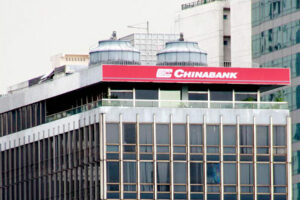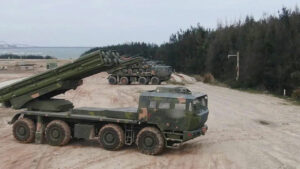Energy security for Philippine recovery and development

As the development of the energy sector was not at all part of the Duterte administration’s agenda or priorities, the looming energy crisis is giving goose-bumps to Filipino consumers, businesses, and the industry itself.
To bring the energy predicament to the national attention, the Stratbase ADR Institute, in partnership with CitizenWatch Philippines, hosted a virtual town hall discussion on “Ensuring Power Supply Security for a Sustainable Economic Recovery” on Nov. 11.
In welcoming the panelists and the hundreds in attendance, I specifically highlighted the interdependence between the following factors. Given a stable power supply and modern electricity supply system in the country, the business climate will improve while simultaneously attracting foreign investments. If business is good and more investments are here, more jobs will eventually be created. Altogether, these will redound to the speedy revival of the Philippine economy.
Echoing through the town hall discussion was of course the urgent question of improving the energy supply. Duly noted by Louie Montemar (Convenor of Bantay Konsyumer, Kalsada, at Kuryente or BK3), the top priority should be improving the supply, as this has been a problem immediately after EDSA, and has been since.
For Senator Sherwin Gatchalian, the exploration for new energy sources to improve supply necessitates financial muscle and technology. Risking a hefty investment of $20 million to make one drill, he rightly pointed out that contractors must have the financial and technical expertise.
The current contractors wanted to start drilling new wells and would naturally want an extension of their contracts, but for some reason, they were not given that opportunity, which many observers see as an alleged set-up.
Mr. Gatchalian argued for the need to diversify the energy supply, particularly maximizing renewable energy, and diversifying energy sources in oil and gas. According to him, “There is potentially 31,000 megawatts of power which can be drawn from renewable sources.”
Some speakers, however, aired the concern about the high prices involved in renewable resources. For instance, Victorio A. Dimagiba (President, Laban Konsyumer, Inc.) harped on either junking the feed-in tariff (FIT) policy or repealing the existing Renewable Energy Act 9513 or the RE law. Further, they have even initiated a petition to the Energy Regulatory Commission (ERC) to nullify the FIT increases for the consumers’ protection.
Still on improving the energy supply but in terms of making prices competitive, Romeo Bernardo, Vice-Chairman of the Foundation for Economic Freedom (FEF), stated that bringing down the price is based on the assurance of the supply side. This scenario is a pre-condition where competition will bring down the price. Unfortunately, according to him, “some of the interventions of government went on restricting supply.”
In connection with this, Ernesto Pantangco, Chairman of the Energy Committee of the Management Association of the Philippines (MAP), ventilated the need to have a long-term integrated power development plan that spans the next two to three decades. Having been involved in the power industry for the past four or five administrations, he gave due emphasis on the shifting priorities of every administration and emphatically expressed that there has been no consistency.
Another issue that impacts on both energy supply and prices is the importance of having a transmission facility in place. As argued by Mr. Bernardo, “if generators are discouraged from building because they cannot connect to the system, you will have a shortage in supply, then high prices. Our government regulators, DOE (Department of Energy) and ERC, have to do a better job in making sure that transmission facilities are built in a timely way.”
Mr. Montemar, on the issue of power generation, cited the live case of Meralco and the DoE regarding a reported “solar hybrid micro-grid” project in Cagbalete Island in the east coast of Luzon. The lesson, according to him, is that we already have a working model that uses solar power technology and battery storage supplemented by several diesel-powered generators for continuous electricity supply to the island. This can be further developed and replicated for unserved and underserved communities across the archipelago, he said.
With both technology and investments, we can diversify our energy sources and develop indigenous sources, and create more supply and cleaner energy in the process.
Another perspective floated in the discussions pertinent to energy security is the concept of energy mix. As global energy prices continue to rise, Mr. Pantangco opined that the impact could have somewhat been mitigated if we had a more balanced energy mix, together with renewable power plants. He also cited that adding nuclear power in the energy formula will add to diversification. On this point, Bienvenido “Nonoy” Oplas, Jr. (President, Minimal Government Thinkers) stated that the consumers are the ones who decide the energy mix, not the government, NGOs, UN, DoE, and ERC.
The immediate context where in the looming energy crisis may happen is that we are now in the electoral season. As Terry Ridon (Convenor, InfraWatch PH) reminded everyone, “we should not lose sight of the elections, and the most important thing is for us to elect better leaders at the highest levels.”
Energy is essential to our country’s inclusive recovery. The next government must put energy security among the top items of the development agenda. A shift from populist to a more developmental, sustainable, and strategic thinking.
Victor Andres “Dindo” C. Manhit is the president of the Stratbase ADR Institute.


![Photo of [B-SIDE Podcast] The promise of power: Nuclear energy in the Philippines](https://redstateinvestings.com/wp-content/uploads/2022/09/09.26.22-B_Side_Arcilla_1400x1400-300x300-i1AWK1-300x220.jpeg)

